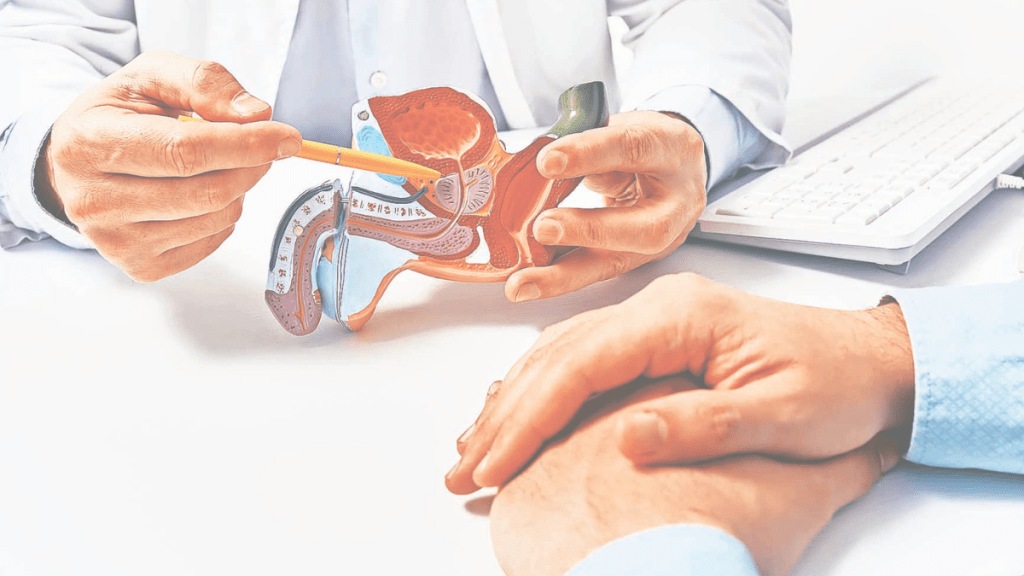Prostrate issues often crop up for many. Dr Manish Singhal, senior consultant, medical oncology, Indraprastha Apollo Hospitals, says while prostate issues can affect men of all backgrounds, certain factors increase susceptibility. Age is the most significant risk factor, with problems becoming more common after 50. Family history also plays a role, as does race, with African-American men having a higher incidence of prostate cancer. Obesity and a diet high in animal fats have been linked to increased risk. Certain medical conditions like diabetes and heart disease may contribute to prostate problems. Exposure to specific chemicals, such as Agent Orange, may increase risks. Hormonal factors are important, as prostate growth and function are influenced by male hormones like testosterone. Some studies suggest that men with higher testosterone levels may be more prone to prostate enlargement. Lifestyle factors such as smoking, excessive alcohol consumption, and lack of exercise may also affect prostate health. It’s important to note that having risk factors doesn’t guarantee developing prostate issues, and some men with no apparent risk factors may still experience problems. Regular check-ups and screenings, especially for men over 50 or those with additional risk factors, are crucial for early detection and management.
Is prostate enlargement preventable with any lifestyle measures?
While it’s not always possible to completely prevent prostate enlargement, several lifestyle measures may help reduce the risk or slow progression. Maintaining a healthy diet is crucial; fruits, vegetables, whole grains, and lean proteins while limiting red meat and high-fat dairy products can be beneficial. Some studies suggest that foods rich in lycopene, such as tomatoes, may have a protective effect. Staying physically active is important; regular exercise, particularly aerobic activities and strength training, can help maintain overall health and potentially reduce prostate enlargement risk. Maintaining a healthy weight is also key, as obesity has been linked to increased prostate issues. Stress management through techniques like meditation or yoga may be helpful. Staying hydrated and practicing good urinary habits, such as emptying the bladder completely when urinating, can also support prostate health. Some research suggests that regular ejaculation may have protective effects. While not definitively proven, these lifestyle measures can contribute to overall health and potentially reduce the risk of prostate enlargement.
What are the danger signs for prostate cancer?
One common sign is difficulty urinating, including a weak or interrupted urine flow, frequent urination (especially at night), or trouble starting or stopping urination. Pain or burning during urination can also be a warning sign. Blood in the urine or semen is another serious symptom that should never be ignored. Some men may experience pain in the lower back, hips, or upper thighs, which can indicate that cancer has spread beyond the prostate. Erectile dysfunction can sometimes be a sign of prostate issues, including cancer. Unexplained weight loss or fatigue may occur in advanced stages. It’s important to note that these symptoms can also be caused by non-cancerous conditions like benign prostatic hyperplasia (BPH). However, any of these signs should prompt a visit to a healthcare provider for proper evaluation. Regular prostate-specific antigen (PSA) blood tests and digital rectal exams are recommended for men over 50, or earlier for those at higher risk, to detect potential issues before symptoms arise.
Besides surgical intervention, are other treatment methods available for enlargement?
Besides surgical intervention, several other treatment methods are available for prostate enlargement. Medications are often the first line of treatment. Alpha-blockers can relax prostate muscles and bladder neck, improving urine flow. 5-alpha reductase inhibitors can shrink the prostate by blocking hormones that promote growth. Combination therapy using both types of drugs may be more effective for some men. Minimally invasive therapies are also options. These include transurethral needle ablation (TUNA), which uses radio waves to destroy excess prostate tissue, and transurethral microwave therapy (TUMT), which uses microwave energy. Prostatic urethral lift is a newer procedure that pulls back enlarged prostate tissue. Water vapour therapy uses steam to destroy prostate cells. For some men, lifestyle changes can help manage symptoms. These might include limiting fluid intake before bedtime, avoiding caffeine and alcohol, and doing pelvic floor exercises. Some herbal supplements like saw palmetto are popular, though their effectiveness is debated. It’s crucial to consult with a healthcare provider to determine the most appropriate treatment, as the best approach depends on the severity of symptoms, prostate size, and overall health.







